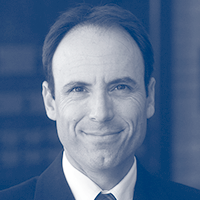constitutioncenter.org
 Common Interpretation
Common Interpretation
The Second Amendment
THE SECOND AMENDMENT
By Nelson Lund and Adam Winkler
Modern debates about the Second Amendment have focused on whether it protects a private right of individuals to keep and bear arms, or a right that can be exercised only through militia organizations like the National Guard. This question, however, was not even raised until long after the Bill of Rights was adopted.
Many in the Founding generation believed that governments are prone to use soldiers to oppress the people. English history suggested that this risk could be controlled by permitting the government to raise armies (consisting of full-time paid troops) only when needed to fight foreign adversaries. For other purposes, such as responding to sudden invasions or other emergencies, the government could rely on a militia that consisted of ordinary civilians who supplied their own weapons and received some part-time, unpaid military training.
The onset of war does not always allow time to raise and train an army, and the Revolutionary War showed that militia forces could not be relied on for national defense. The Constitutional Convention therefore decided that the federal government should have almost unfettered authority to establish peacetime standing armies and to regulate the militia.
This massive shift of power from the states to the federal government generated one of the chief objections to the proposed Constitution. Anti-Federalists argued that the proposed Constitution would take from the states their principal means of defense against federal usurpation. The Federalists responded that fears of federal oppression were overblown, in part because the American people were armed and would be almost impossible to subdue through military force.
Implicit in the debate between Federalists and Anti-Federalists were two shared assumptions. First, that the proposed new Constitution gave the federal government almost total legal authority over the army and militia. Second, that the federal government should not have any authority at all to disarm the citizenry. They disagreed only about whether an armed populace could adequately deter federal oppression.
The Second Amendment conceded nothing to the Anti-Federalists’ desire to sharply curtail the military power of the federal government, which would have required substantial changes in the original Constitution. Yet the Amendment was easily accepted because of widespread agreement that the federal government should not have the power to infringe the right of the people to keep and bear arms, any more than it should have the power to abridge the freedom of speech or prohibit the free exercise of religion.
Much has changed since 1791. The traditional militia fell into desuetude, and state-based militia organizations were eventually incorporated into the federal military structure. The nation’s military establishment has become enormously more powerful than eighteenth century armies. We still hear political rhetoric about federal tyranny, but most Americans do not fear the nation’s armed forces and virtually no one thinks that an armed populace could defeat those forces in battle. Furthermore, eighteenth century civilians routinely kept at home the very same weapons they would need if called to serve in the militia, while modern soldiers are equipped with weapons that differ significantly from those generally thought appropriate for civilian uses. Civilians no longer expect to use their household weapons for militia duty, although they still keep and bear arms to defend against common criminals (as well as for hunting and other forms of recreation).
The law has also changed. While states in the Founding era regulated guns—blacks were often prohibited from possessing firearms and militia weapons were frequently registered on government rolls—gun laws today are more extensive and controversial. Another important legal development was the adoption of the Fourteenth Amendment. The Second Amendment originally applied only to the federal government, leaving the states to regulate weapons as they saw fit. Although there is substantial evidence that the Privileges or Immunities Clause of the Fourteenth Amendment was meant to protect the right of individuals to keep and bear arms from infringement by the states, the Supreme Court rejected this interpretation in United States v. Cruikshank (1876).
Until recently, the judiciary treated the Second Amendment almost as a dead letter. In District of Columbia v. Heller (2008), however, the Supreme Court invalidated a federal law that forbade nearly all civilians from possessing handguns in the nation’s capital. A 5–4 majority ruled that the language and history of the Second Amendment showed that it protects a private right of individuals to have arms for their own defense, not a right of the states to maintain a militia.
The dissenters disagreed. They concluded that the Second Amendment protects a nominally individual right, though one that protects only “the right of the people of each of the several States to maintain a well-regulated militia.” They also argued that even if the Second Amendment did protect an individual right to have arms for self-defense, it should be interpreted to allow the government to ban handguns in high-crime urban areas.
Two years later, in McDonald v. City of Chicago (2010), the Court struck down a similar handgun ban at the state level, again by a 5–4 vote. Four Justices relied on judicial precedents under the Fourteenth Amendment’s Due Process Clause. Justice Thomas rejected those precedents in favor of reliance on the Privileges or Immunities Clause, but all five members of the majority concluded that the Fourteenth Amendment protects against state infringement of the same individual right that is protected from federal infringement by the Second Amendment.
Notwithstanding the lengthy opinions in Heller and McDonald, they technically ruled only that government may not ban the possession of handguns by civilians in their homes. Heller tentatively suggested a list of “presumptively lawful” regulations, including bans on the possession of firearms by felons and the mentally ill, bans on carrying firearms in “sensitive places” such as schools and government buildings, laws restricting the commercial sale of arms, bans on the concealed carry of firearms, and bans on weapons “not typically possessed by law-abiding citizens for lawful purposes.” Many issues remain open, and the lower courts have disagreed with one another about some of them, including important questions involving restrictions on carrying weapons in public.
Matters of Debate
 Nelson LundUniversity Professor, Antonin Scalia School of Law, George Mason University
Nelson LundUniversity Professor, Antonin Scalia School of Law, George Mason University
NOT A SECOND CLASS RIGHT: THE SECOND AMENDMENT TODAY BY NELSON LUND
The right to keep and bear arms is a lot like the right to freedom of speech. In each case, the Constitution expressly protects a liberty that needs to be insulated from the ordinary political process.
 Adam WinklerProfessor of Law, UCLA School of Law
Adam WinklerProfessor of Law, UCLA School of Law
THE REASONABLE RIGHT TO BEAR ARMS BY ADAM WINKLER
Gun control is as much a part of the Second Amendment as the right to keep and bear arms. The text of the amendment, which refers to a “well regulated Militia,” suggests as much.
No comments:
Post a Comment